
News + Trends
Nikon Z 8: Like a flagship - only cheaper
by David Lee

Less clunky than the Z 9, yet capable of the same performance, the Z 8 rivals the significantly pricier Sony Alpha 1. The camera you go for will mostly be down to your personal preferences.
Could I please get a Nikon Z 9, but smaller, lighter and cheaper? Why, of course! The Z 8 has the same sensor, the same processor and the same autofocus. Plus, the trade-offs you have to make compared to the more expensive Z 9 are minimal.
Like the Z 9, the Z 8 is a camera for pros – or for amateur photographers with ultra-high expectations. When it comes to purpose, the Z 8 is an all-round camera – instead of having a particular area of expertise, it can do everything well. It’s a similar story with the Sony Alpha 1 or the Canon EOS R5. With this in mind, I’ll be covering the differences between these models here.
At 910 grammes, the Z 8 is lighter than the 1340-gramme Z 9. Even so, it’s still a bit of a brick. The 739-gramme Sony Alpha 1 and the 738-gramme Canon R5 weigh noticeably less.
For a camera without an integrated battery grip, the Z 8 is really large. This isn’t necessarily a disadvantage – if you’ve got big hands, it’s very easy to operate. The handle has good grip, not only because of its shape, but also because of its material. It’s so grippy that it almost feels a little sticky. That doesn’t bother me, though. Its ergonomics are on point – in my book, at least. On the Z 8, the joystick is in exactly the right place.
The buttons are set out in that familiar Nikon way. Canon, on the other hand, has been switching up the layout with every new model lately. Nikon has a clear concept underpinning how the device should be operated, and sticks to it. This also includes the fact that you can’t map every button yourself. Though this can be a drawback, I see it as more of a plus; it’s the only way to label them meaningfully and correctly. Speaking of which, when the display backlight is turned on, the buttons become illuminated with a faint light. This is very handy in the dark.
The viewfinder has a low resolution for a top model. Even mid-range cameras are kitted out with 3.69 million megapixels, with top-range model Sony Alpha 1 reaching 9.4 million pixels. Despite this, I really enjoy taking pictures with this viewfinder. The picture is large, responsive and, above all, exceptionally bright. All these factors can be reduced to extend the battery life. During continuous shooting, you’ll have a regular live image, with no blackout or jittering.
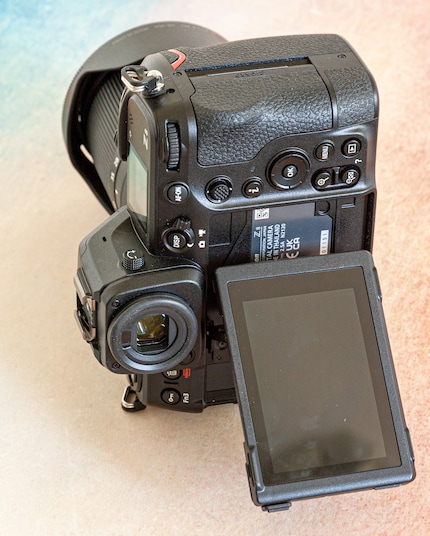
The screen folds out both horizontally and vertically, with the latter also able to reach a 90-degree angle. The handle used to unfold the display vertically is small, and you need to pull it pretty hard. What’s lacking is 180-degree rotation for selfies. It’s not like the Z 8 is a vlogging camera. You can, however, see yourself on your smartphone provided you connect the camera to the Snapbridge app. Another option would be to screw a field monitor like the Godox GM55 onto the camera.
The Z 8 is as fast as the Z 9. In other words, very fast. It has a stacked sensor – currently the most advanced and expensive type of sensor out there. The design enables lightning-fast sensor readout, eliminating the need for a mechanical shutter. Subsequently, the Z 8 and Z 9 don’t have one built in. The sensor is still protected from dust when changing lenses thanks to a protective shutter.
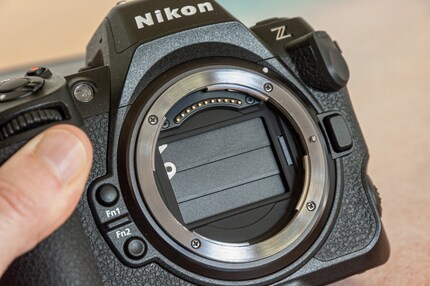
The continuous shooting speed is 20 RAW images per second. With JPEG, you can get 30, 60 or 120. At 60 frames per second, only one part of the sensor is used, which reduces the angle of view and the resolution. This puts it at 5392 × 3592, a good 19 megapixels. At 120 images, you get typical cropping, but only at a resolution of 11 megapixels (4128 × 2752).
As for the competition, the Canon EOS R5 also manages 20 RAW images per second. However, it doesn’t have a stacked sensor. That means you run the risk of developing rolling shutter, which makes moving motifs look distorted. To avoid this, you need to use the mechanical shutter, which will only get you 12 frames per second. The Sony Alpha 1 has a stacked sensor and manages 30 images, but only with lossy RAW. The rest of the time, it also manages 20.
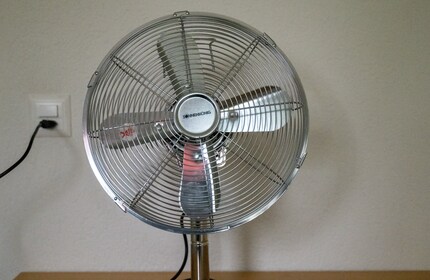
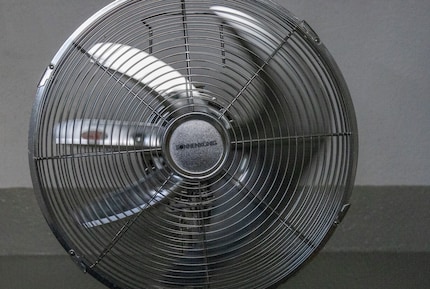
At 21 RAW images, the Nikon Z 8’s buffer memory is rather small for such an expensive camera. Having a small buffer memory generally means that the camera can’t keep up its maximum continuous shooting speed for long. Today’s superfast memory cards, however, balance this out. It takes about 3 seconds or 60 RAW images before things slow down. At 15 images per second, this stops happening.
While we’re on the subject of memory cards, unlike the Z 9, the Z 8 only has one CFexpress card slot. The other is UHS-II – the fastest standard for SD cards, yet still slower than CFexpress. The Sony Alpha 1 has an advantage here as both card slots can take SD as well as CFexpress. This is possible because it takes CFexpress type A, which is smaller. On the Canon R5, it’s the same story as on the Z 8.
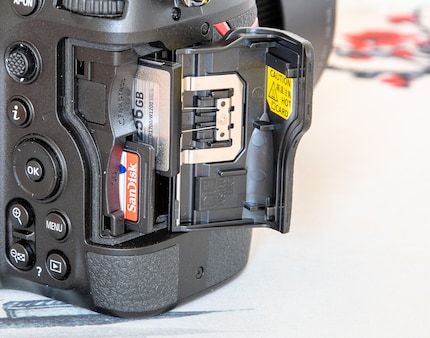
When it comes to sport and wildlife photography, I find it really useful to have a camera that shoots with the shutter button half-pressed, allowing me to save images before fully pressing the shutter. The Z 8 is able to do this; a function Nikon calls pre-release capture. Three different pre-capture intervals can be set, the longest being one second. As is the case on the Z 9, however, this only works at speeds of 30, 60 and 120 photos per second, meaning JPEG only. Given the processing power of this camera, I’d say pre-capture with RAW seems technically possible, and I hope Nikon will deliver it with a firmware update. After all, Nikon only enabled Z 9’s current pre-release function with a firmware update.
Like the Z 9, the Z 8 has 493 autofocus points. Scene recognition can be applied to people, animals, vehicles and aircraft. It doesn’t work on every animal; the algorithm was trained on dogs, cats and birds. You can specify which subjects you want the camera to look for, but you don’t have to. This is because there’s also an automatic mode that lets the camera detect what’s being photographed on its own.
During my few days of trying out the camera, I wasn’t able to test any realistic animal or sports scenarios, partly because I didn’t have any telephoto lenses. Comparing it to other cameras is difficult in any case because every situation is different. YouTuber Jared Polin also points this out during his direct comparison of the eye-detection autofocus on the Nikon Z 9, the Canon R5 and the Sony A1. In a new video about the Z 8, Polin says that while the autofocus is very good, the scene detection still can’t match the top-range devices from Canon and Sony. In the video below, you can see the tracking for yourself and draw your own conclusions. But like I said, every situation is different.
In my own simple test video, eye and face recognition works without a hitch. The camera also recognises my eye from the side. When I face the front, it recognises both eyes and focuses on the one it’s closest to. At the beginning of the video, you can see that the camera has detected my face, but hasn’t focused yet. This can be adjusted in the settings. For videos, a low speed is preset to prevent the autofocus from jumping around nervously.
As an alternative to scene recognition, the Z 8’s autofocus also offers 3D tracking. This involves using the focus field to select the object to be tracked. The camera will then move the focus field along with the subject. In principle, 3D tracking works with any motif. Personally, I think it works reliably.
The Nikon Z 8, the Canon R5, and the Sony A1 can all shoot 8K video. However, the Nikon is the only one of the three to do it at 60 fps – in RAW format. Not only that, but the maximum video resolution is 8256 × 4644 pixels. Meanwhile, Sony offers UHD-II in 8K – 7680 × 4320 pixels.
Who would that even benefit? Filming in 8K is mostly about being able to crop the image after the fact and still achieve a 4K resolution. Since this can be of particular interest when taking animal shots, smooth motion sequences with 60 fps are also welcome.
The camera’s speed also impacts 4K. This one reaches 120 fps, and 60 fps even with maximum sharpness. To do this, I need to activate «advanced oversampling». Oversampling, by the way, is when a camera compresses the 4K image from a higher resolution. This produces a sharper image, but involves an enormous amount of computing power. It’s why even state-of-the-art cameras can often only do this with low frame rates up to 30 frames per second. With advanced oversampling, the Z 8 achieves a crisp image at 4K60, just as good as at 4K30. I didn’t find out during my test whether the camera would eventually overheat.
In the following images, you can see a 750-pixel-wide snippet of a 4K video image, shot with different frame rates and quality settings. The quality is generally a bit better in the original video because our website also compresses the images. Nevertheless, it’s easy to see that 60 fps with oversampling is just as good as 30 fps.




I’d rate the image quality of the sensor as very good. At 6400 ISO, the images are only faintly noisy, and by scaling down, this noise often disappears completely. Even in the high ISO range, colours don’t fade.


I can’t do a systematic, direct comparison with the competition. My general impression is that image noise and dynamic range have hardly changed in recent years, and that all manufacturers are at about the same level. The rankings on DxOMark.com confirm that impression. The Z 9, and with it, the Z 8, are neck and neck with the Sony A1. Both are behind the 2017 Nikon D850. The differences tend to be minimal.
This means you can’t expect miracles any time soon. If you have to or want to do a lot of post-processing, the image will start to get noisy, just like with any other camera. For example, to turn the top image into the one below, serious intervention is required. For a low-noise image, a tripod and bracketing would’ve been the solution here.
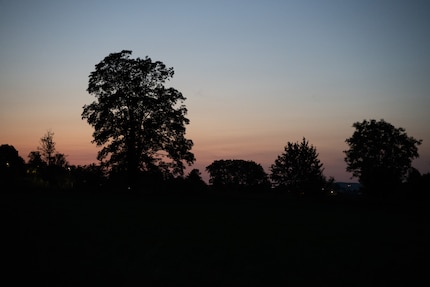
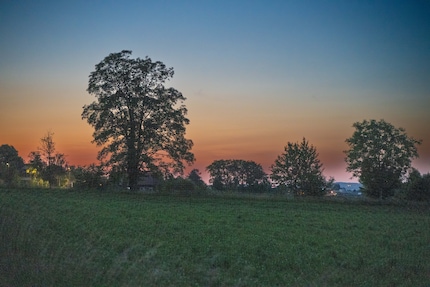

Flicking through the camera’s menu items, it dawns on me that my review only scratches the surface. There’s the starlight view, for instance, which significantly brightens a live image so that you don’t just see blackness when taking snaps at night. Then there’s the HLG setting, which prompts the HEIF file format to be used instead of JPEG. This gives images a colour depth of 10 bits instead of 8, and makes them look different – at least on the camera – with fewer washed-out shadows and fewer overexposed peaks. HEIF can also be used for videos. In addition, there are countless settings. One in particular I’d like to highlight is the option to select the speed for moving the focus points. It allows me to move quickly without going past the target.
The battery life according to CIPA standards is roughly between the Sony Alpha 1 and the Canon EOS R5. Mind you, these values are almost completely theoretical – the CIPA method from 2003 doesn’t do the application of today’s cameras any justice. It’s very dependent on the camera settings and, more importantly, the way you film and shoot. Without having taken any measurements, I get the sense that the Z 8’s battery life is somewhere between okay and good. The Z 9, with its fixed vertical grip and huge battery, has a clear advantage here.
When I found out about the Z 8, my knee-jerk reaction was, «Shut up and take my money.» The Z 9’s capabilities are already well established. There were also few surprises in store for me during my review – just one, in fact. I was amazed at how good the viewfinder is, despite its relatively low resolution.
Like its big sister, the Z 8 is an all-rounder capable of going toe-to-toe with the Canon EOS R5 or the much more expensive Sony Alpha 1. In terms of scene recognition, it’s probably slightly behind the competition. As for its video capabilities, however, I see it as the best of the three. The Z 8 could, for instance, be of interest to wildlife photographers who also want to take videos.
That being said, I’d advise against making an impulse buy. An investment like this one needs to be thought through. For one, the Z 8 has to match your operation- and camera body preferences. In my case, it does, because I’ve been using Nikon cameras since 2004. Being new to a particular system will also give you food for thought, because you’ll need to include the available lenses in your purchasing decision. Take Nikon, for example, which, unlike Sony, doesn’t (yet) have a super telephoto under 2,000 francs. This puts the camera’s much lower price in comparison to the Sony Alpha 1 into perspective a bit. What Nikon does have is a lightweight 400 mm supertelephoto with f/4.5, which you can’t get from its competitors. Basically, you need to think about which brand has the lenses you want and whether they suit your budget. In my opinion, this is much more important than which of the three cameras is slightly better at one thing or the other. After all, all three are top-of-the-line.
In terms of concept, the Z 8 is the mirrorless successor to the D850 SLR camera. If you have one and have been hesitant about switching to mirrorless, you can now take the plunge without a second thought. The image quality of the sensor is unlikely to be better than that of the D850, and the battery life even worse. However, considering every other aspect, including autofocus, speed and video, the Z 8 is clearly better.
My interest in IT and writing landed me in tech journalism early on (2000). I want to know how we can use technology without being used. Outside of the office, I’m a keen musician who makes up for lacking talent with excessive enthusiasm.